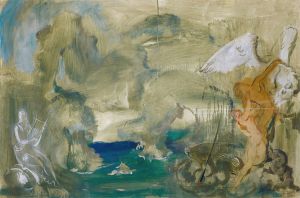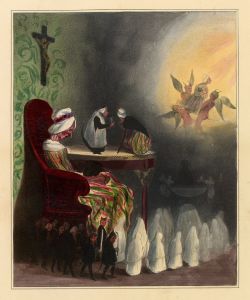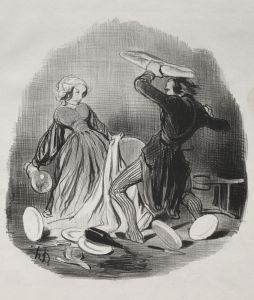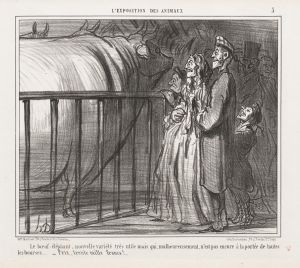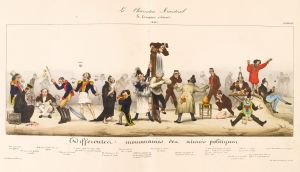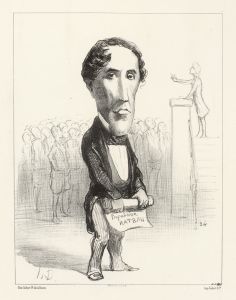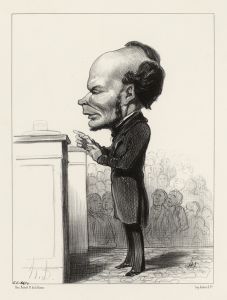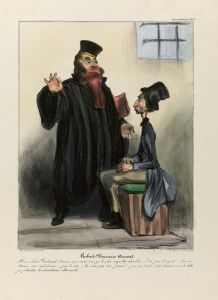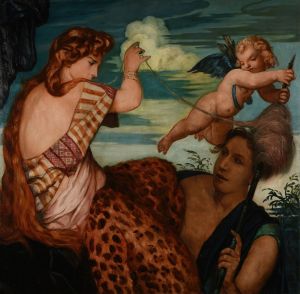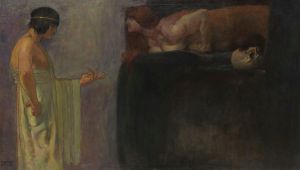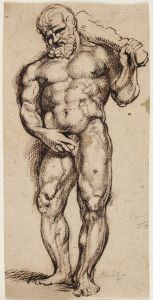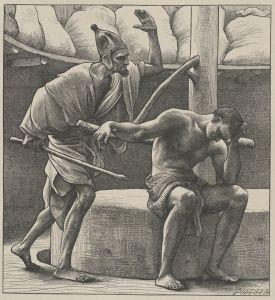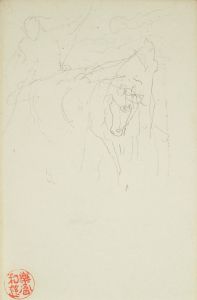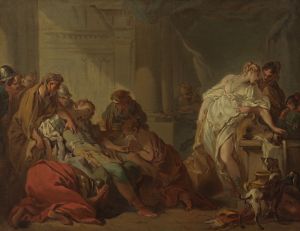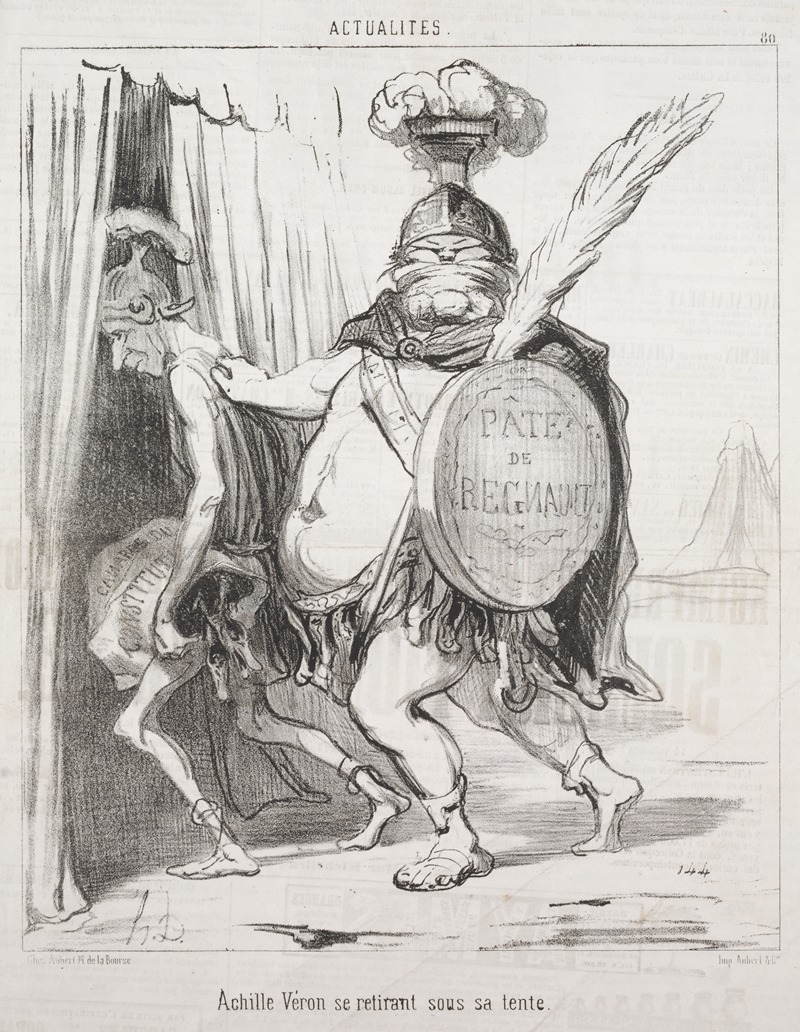
Achilles Véron withdrawing into his tent.
A hand-painted replica of Honoré Daumier’s masterpiece Achilles Véron withdrawing into his tent., meticulously crafted by professional artists to capture the true essence of the original. Each piece is created with museum-quality canvas and rare mineral pigments, carefully painted by experienced artists with delicate brushstrokes and rich, layered colors to perfectly recreate the texture of the original artwork. Unlike machine-printed reproductions, this hand-painted version brings the painting to life, infused with the artist’s emotions and skill in every stroke. Whether for personal collection or home decoration, it instantly elevates the artistic atmosphere of any space.
Honoré Daumier, a prominent French artist known for his caricatures, paintings, and sculptures, created a work titled "Achilles Véron withdrawing into his tent." This piece is part of Daumier's extensive oeuvre that often satirized political figures and societal norms of his time. Daumier was active during the 19th century, a period marked by significant political upheaval and social change in France, which provided ample material for his critical and often humorous works.
The title "Achilles Véron withdrawing into his tent" suggests a satirical take on a contemporary figure, likely referencing a political or cultural personality of Daumier's time. The name "Achilles" alludes to the legendary Greek hero from Homer's "Iliad," known for his strength and his pivotal role in the Trojan War. In the epic, Achilles famously withdraws from battle and retreats to his tent after a dispute with Agamemnon, the leader of the Greek forces. This act of withdrawal is symbolic of protest and personal pride, themes that Daumier might have been exploring in his work.
The addition of "Véron" in the title likely points to a specific individual, possibly a public figure known to Daumier's audience. Unfortunately, without more context or specific historical records, it is challenging to identify precisely who Véron was or what particular event or characteristic Daumier was commenting on. Daumier's works often included such references, using well-known stories or figures to critique or highlight the absurdities of contemporary politics and society.
Daumier's artistic style is characterized by its bold lines and expressive forms, often exaggerating features to enhance the satirical impact. His works were published in various newspapers and journals, making them accessible to a broad audience and amplifying their influence. Through his art, Daumier addressed issues such as justice, power, and the human condition, often focusing on the follies and vices of those in authority.
While specific details about "Achilles Véron withdrawing into his tent" are scarce, it fits within Daumier's broader body of work that frequently used classical references to comment on modern events. His ability to blend humor with sharp social critique made him a significant figure in the art world and a precursor to modern political cartooning.
Daumier's legacy is preserved in numerous collections worldwide, with his works continuing to be studied for their artistic merit and historical insight. His unique approach to addressing the political and social issues of his time through art remains influential, demonstrating the power of visual media to engage with and critique societal norms.
In summary, "Achilles Véron withdrawing into his tent" is a testament to Honoré Daumier's skill in using classical allegory to comment on contemporary issues. While the specific details of the work's subject may be elusive, its existence within Daumier's oeuvre highlights his enduring impact as a social commentator and artist.





